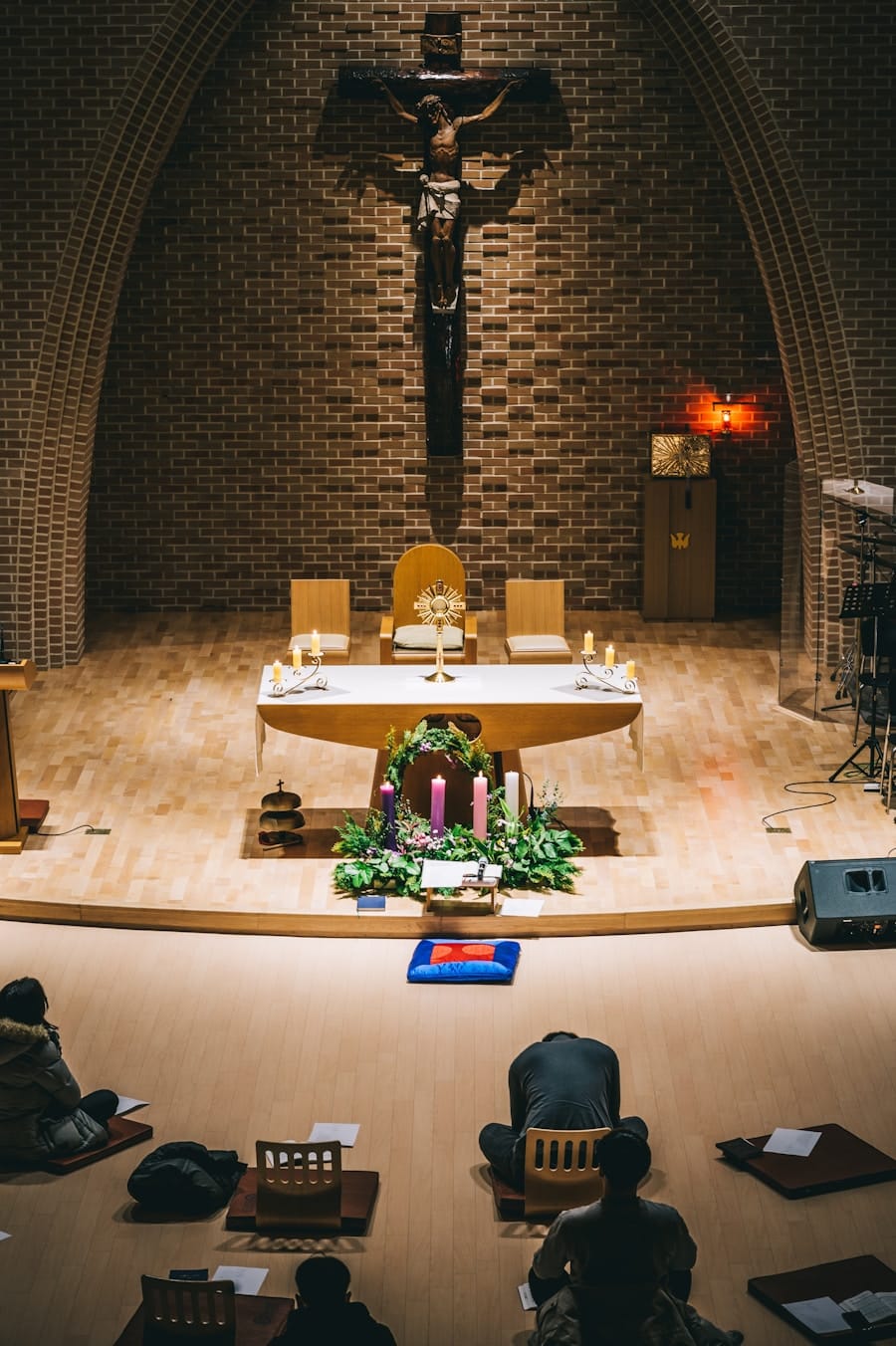In recent years, the landscape of religious and spiritual gatherings has undergone a significant transformation, largely propelled by advancements in technology and the necessity for social distancing during global crises. The COVID-19 pandemic served as a catalyst, forcing many faith communities to pivot from traditional in-person gatherings to virtual platforms. This shift was not merely a temporary solution; it marked the beginning of a new era in which congregations and spiritual groups began to explore the potential of online spaces for worship, fellowship, and community engagement.
Platforms like Zoom, Facebook Live, and YouTube became the new sanctuaries, allowing individuals to connect with their faith communities from the comfort of their homes. The rise of virtual gatherings has also democratized access to spiritual resources. Individuals who may have previously felt marginalized or excluded from traditional religious settings found solace in online communities that offered a more inclusive environment.
For instance, LGBTQ+ individuals, people with disabilities, and those living in remote areas could engage with spiritual practices and teachings that resonated with them without the barriers often present in physical spaces. This newfound accessibility has led to a diversification of voices within religious discourse, as various traditions and interpretations can now be shared and celebrated in a global context.
Key Takeaways
- Virtual religious and spiritual gatherings have seen a significant rise in popularity, especially during the COVID-19 pandemic.
- The benefits of virtual gatherings include increased accessibility and inclusivity, but drawbacks include potential for distraction and lack of physical connection.
- Virtual rituals and ceremonies have evolved to incorporate technology, such as live streaming and virtual reality, to enhance the experience for participants.
- Technology has had a significant impact on religious and spiritual communities, allowing for global reach and new forms of community building.
- Creating inclusive and accessible virtual spaces for worship is crucial for ensuring that all individuals can participate in religious and spiritual gatherings.
The Benefits and Drawbacks of Virtual Gatherings
Broader Reach and Sense of Belonging
One of the significant advantages of virtual gatherings is the ability to connect with a broader audience. Faith leaders can reach congregants who may not have been able to attend services due to geographical constraints or personal circumstances. This expanded reach fosters a sense of belonging among individuals who might otherwise feel isolated in their spiritual journeys. Additionally, virtual platforms often allow for greater flexibility in participation; individuals can engage with services at their convenience, whether through live streaming or recorded sessions.
The Drawbacks of Virtual Gatherings
However, the transition to virtual gatherings is not without its drawbacks. One major concern is the potential loss of personal connection that often accompanies in-person worship. The tactile experiences of communal prayer, shared rituals, and physical touch—elements that are integral to many religious practices—are challenging to replicate in a digital format.
The Digital Divide and Questions of Equity
Furthermore, the reliance on technology can create barriers for those who are not tech-savvy or lack access to reliable internet services. This digital divide can inadvertently exclude certain demographics from fully participating in virtual spiritual communities, raising questions about equity and inclusivity.
The Evolution of Virtual Rituals and Ceremonies
As virtual gatherings became more commonplace, religious and spiritual communities began to innovate their rituals and ceremonies to suit the online environment. Traditional practices were adapted to fit the digital format while still retaining their core significance. For example, many faith communities embraced live-streamed services that incorporated interactive elements such as chat features, allowing congregants to share prayers or reflections in real-time.
This adaptation not only maintained a sense of community but also encouraged active participation, transforming passive viewers into engaged participants. Moreover, some communities have developed entirely new rituals designed specifically for virtual spaces. Online meditation sessions, virtual prayer circles, and digital study groups have emerged as popular alternatives to traditional gatherings.
These innovations reflect a growing understanding that spirituality can thrive in diverse formats, transcending physical limitations. For instance, during significant religious observances like Passover or Ramadan, families have found ways to celebrate together virtually, sharing meals over video calls and engaging in collective prayers despite being miles apart. This evolution highlights the resilience of faith traditions and their ability to adapt to contemporary challenges.
The Impact of Technology on Religious and Spiritual Communities
The integration of technology into religious practices has fundamentally altered the dynamics within spiritual communities. Social media platforms have become vital tools for outreach and engagement, allowing faith leaders to share messages of hope, inspiration, and guidance beyond the confines of traditional worship settings. For instance, many churches and synagogues have utilized platforms like Instagram and TikTok to reach younger audiences, employing creative content that resonates with contemporary cultural trends while conveying spiritual teachings.
Additionally, technology has facilitated interfaith dialogue and collaboration on a global scale. Virtual conferences and webinars have brought together diverse religious leaders and practitioners to discuss pressing social issues such as climate change, social justice, and mental health from various faith perspectives. This interconnectedness fosters mutual understanding and respect among different traditions, promoting a sense of unity in addressing shared challenges.
The impact of technology extends beyond mere communication; it has become a catalyst for collective action within religious communities.
Creating Inclusive and Accessible Virtual Spaces for Worship
As virtual gatherings continue to evolve, the importance of creating inclusive and accessible spaces for worship cannot be overstated. Faith communities must prioritize accessibility by considering the diverse needs of their members. This includes providing closed captioning for those who are deaf or hard of hearing, offering translation services for non-native speakers, and ensuring that platforms used for gatherings are user-friendly for individuals with varying levels of technological proficiency.
Moreover, fostering an inclusive environment goes beyond mere accessibility; it requires intentional efforts to create a sense of belonging for all participants. Faith leaders can encourage open dialogue about individual experiences and challenges within the virtual space, allowing members to share their perspectives and contribute to the community’s growth. By actively engaging with diverse voices and experiences, religious communities can cultivate an atmosphere where everyone feels valued and empowered to participate fully in their spiritual journeys.
Navigating the Challenges of Virtual Community Building
Establishing Personal Connections
One of the significant hurdles is establishing personal connections among members who may never meet face-to-face. To address this challenge, faith leaders can implement small group discussions or breakout sessions during larger gatherings, allowing participants to engage more intimately with one another. These smaller settings foster deeper relationships and create opportunities for individuals to share their stories and experiences.
Maintaining Engagement
Another challenge lies in maintaining engagement over time. The novelty of virtual gatherings may wear off as individuals become accustomed to online formats. To combat this potential disengagement, communities can introduce varied programming that includes guest speakers, interactive workshops, or themed discussions that resonate with current events or member interests.
Sustaining Enthusiasm
By continually refreshing content and encouraging active participation, faith communities can sustain enthusiasm and commitment among their members.
The Role of Virtual Gatherings in Personal and Community Transformation
Virtual gatherings have emerged as powerful catalysts for personal growth and community transformation within religious contexts. For many individuals, the ability to participate in online spiritual practices has provided a renewed sense of purpose and connection during times of uncertainty.
On a broader scale, virtual gatherings have facilitated collective action within communities striving for social change. Many faith-based organizations have harnessed the power of online platforms to mobilize members around issues such as racial justice, environmental stewardship, and mental health awareness. By leveraging technology to organize campaigns, share resources, and foster dialogue on these critical topics, religious communities can amplify their impact beyond their immediate circles, contributing to meaningful societal transformation.
The Future of Virtual Gatherings: Opportunities and Possibilities
Looking ahead, the future of virtual gatherings within religious and spiritual contexts holds immense potential for innovation and growth. As technology continues to advance, new tools will emerge that can enhance the virtual worship experience even further. For instance, augmented reality (AR) and virtual reality (VR) technologies may offer immersive experiences that replicate the feeling of being physically present in sacred spaces while still allowing for remote participation.
Moreover, hybrid models that combine both in-person and virtual elements are likely to become more prevalent as communities seek to balance accessibility with the richness of face-to-face interactions. This approach allows congregations to cater to diverse needs while fostering deeper connections among members who may be geographically dispersed. Ultimately, the evolution of virtual gatherings presents an opportunity for religious communities to reimagine their practices in ways that resonate with contemporary society while remaining rooted in tradition.
By embracing innovation while honoring their core values, faith communities can navigate the complexities of modern life while fostering spiritual growth and connection among their members.
In exploring the future of religious and spiritual gatherings in virtual spaces, it is important to consider the technological tools that can enhance these experiences. One such tool is the use of virtual reality software for creating immersive environments for worship and community building. For those interested in designing virtual spaces for religious gatherings, the article on the best software for house plans from com/best-software-for-house-plans/’>Enicomp offers valuable insights and recommendations.
By utilizing the right software, religious organizations can create engaging and meaningful virtual experiences for their members.
FAQs
What are virtual religious and spiritual gatherings?
Virtual religious and spiritual gatherings are events or meetings that take place in an online or virtual space, allowing participants to connect and engage in religious or spiritual practices without being physically present in the same location.
What are some examples of virtual religious and spiritual gatherings?
Examples of virtual religious and spiritual gatherings include online worship services, virtual meditation sessions, digital prayer groups, and online religious education classes.
What are the benefits of virtual religious and spiritual gatherings?
Some benefits of virtual religious and spiritual gatherings include increased accessibility for individuals with mobility or transportation limitations, the ability to connect with a global community, and the flexibility to participate from the comfort of one’s own home.
What are the challenges of virtual religious and spiritual gatherings?
Challenges of virtual religious and spiritual gatherings may include technological barriers for some participants, the lack of physical presence and connection, and potential distractions from the online environment.
How are religious and spiritual leaders adapting to virtual gatherings?
Religious and spiritual leaders are adapting to virtual gatherings by utilizing online platforms, creating engaging and interactive virtual experiences, and finding new ways to foster community and connection in a digital space.
What is the future of virtual religious and spiritual gatherings?
The future of virtual religious and spiritual gatherings may involve a combination of in-person and online experiences, the development of innovative virtual rituals and practices, and the continued exploration of how technology can enhance spiritual connection and community.



